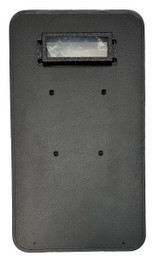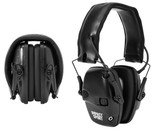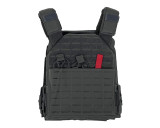How to Choose the Size of the Plated Body Armor - Battle Steel®️
How to Choose the Size of the Plated Body Armor
Did you know that your body armor cannot reliably protect you if the size of the armor is wrong? Choosing just the right size of the plated body armor that will keep you safe and will not hinder your mobility at the same time is not as easy as it may seem. Please read this guide to learn how to correctly tape-measure your body, how to make sure the body armor fits well, and what size of the body armor plates you need.
Fitting the body armor
The art of selecting a well-fitting model and size of the body armor and armor plates is crucial and sometimes can literally demarcate between life and death. When you buy civil clothes you can determine your size using standard size tables or even use the rule of thumb. But when it comes to the special equipment such as a bulletproof armor, there are very strict and definitive standard measurement rules for body armor wearers. We strongly recommend to read the ASTM E3003 “Standard Practice for Measurement of Body Armor Wearers” to learn the full measurement procedure.
Below is a simple measurement guide to determine the size of the body armor you need.
How to tape-measure your body
The measurement procedure aims to measure specific markers on the body to find the best-fitting body armor size then. You should carefully follow the measurement guidelines in order to receive the correct result.
1. Prepare for measuring. A measured person should wear his or her conventional clothes: a comfortable T-shirt, duty pants, and a duty belt. Females should wear their typical type of bra that comfortably fits. Excessive clothing is not allowed, because it can alter the measurement results.
2. Measure horizontal and vertical body markers. The main body landmarks are:
- Chest/Bust girth level
- Torso girth level
- Chest width
- Back width
- Bust point to Bust point (female only)
- Bust point to side seam (female only)
- Under bust girth level (female only)
- Front and back center lengths
- Front lateral length
Make sure the wearer of the armor does not hold breath during measurements and does not hold in the stomach. All measurements should be taken when the wearer of the body armor is in a comfortable stance and position. All measured values must be rounded to the nearest 1 cm or ¼ inch.
3. Select the appropriate plated body armor model according to the measurements. The measured values should be compared to body armor specifications to select the appropriate armor model.
How to make sure the body armor fits well
The purpose of wearing a bulletproof armor is to protect vital organs and minimize damage done to the wearer’s body if shot. At the same time, the armor itself as well as ballistics plates should not hinder wearer’s ability to perform her typical duties. The only way to provide just the right balance between protection and comfort is to follow the measurement guidelines. Equally important is to make sure the armor fits well.
- Make sure the armor plates for body armor are properly inserted. Many body armors are designed to provide maximum protection only if bulletproof vest plates are inserted in one specific direction only. Typically, a plate should have a label marking the working side or the body side of the plate.
- Make sure the front panel is over the front of your body. The front side is the one with a neckline.
- Make sure the straps are not over tightened. The body armor should slide a little bit when you rotate your torso. If it doesn’t – you probably should lose the straps slightly.
- Make sure the front and back sides of the vest overlap at least 2 inches. The front side must be on top of the back side!
- Make sure there is a one-finger gap between the neckline of the vest and the suprasternal notch. The neck opening of the front panel of the vest must remain comfortable at the throat both when standing and when sitting.
- Make sure there is a two-finger gap between the bottom line of the armor and the duty belt. A tactical body armor worn over a uniform is longer and provides more coverage, so it should fit at the duty belt.
While you should choose the model of the body armor and the armor plate size based on the exact measurements, there are several characteristics that a properly fitting armor should exhibit:
- The armor chest plate does not restrict breathing. Including deep breathing like when running or climbing fast.
- The body armor does not affect any typical duty activities of the wearer including casual movements (walking, running, sitting, kneeling etc.)
- The armor plates do not interfere with arms and allow the wearer to use the handgun and equipment comfortably. If there’s rubbing or discomfort while aiming, firing or using equipment located on the back of the duty belt, such armor must be readjusted.
- There are no gaps and unprotected areas in the armholes.
What size of body armor plates do I need?
Selecting the right size of plates for the body armor is crucial. It is not only about protection, but also about your mobility in the armor. Often, mobility is even more important! Hence, you should take the measurements of your body (see above) and select the corresponding body armor plate width and length accordingly.
Here is a general guide on selecting the size of the body armor plates. The most common sizes of the “Shooter Cut” bulletproof plates are 8 x 10 in., 10 x 12 in., and 11 x 14 in.
| Chest Width | Shooter Cut Size | SAPI Cut Size |
| 32-35 in. | S (8 x 10 in.) | XS |
| 36-39 in. | S (8 x 10 in.) | S |
| 40-43 in. | L (10 x 12 in.) | M |
| 44-47 in. | L (10 x 12 in.) | L |
| 48+ in. | XL (11 x 14 in.) | XL |
Important note: the above table is just for reference purposes only. Please make sure to perform the proper measurements as described above to find the most fitting body armor plate size. Remember: improperly inserted armor plates for a bulletproof vest may result in serious injuries and even lethal outcome.
The length of the armor plate for a vest is chosen individually based on the ASTM measurement guide. The general rule of thumb is: the armor plate must be long enough to cover the body from the jugular notch down to the belly button in the standing position.
Final words
As you see, selecting the right size of the body armor is literally vital. Hence, before you buy an armor plate you should carefully perform all the measurements yourself or contact your bulletproof vest plate vendor for consultation on how to choose the size of the plated body armor correctly. Remember: your goal is not maximum protection whatever it takes. In fact, you need to find balance between maximum protection and maximum mobility. Do not overprotect! Too weighty or bad-fitting armor may affect your freedom of movement, reduce your agility and shooting accuracy, and increase reaction times. Needless to say how fatal this could be. Follow the guidelines in this article and don’t hesitate to contact Battle Steel®️ specialists if you need help.
Recent Posts
-
Understanding Ballistic Shield Ratings and Their Applications
The Trusted Name in Tactical Defense - BattleSteel® When it comes to protecting those who protect us …2025-04-19 -
The Importance of Hearing Protection in Tactical Environments
The Legacy of BattleSteel® BattleSteel® is a trusted name in the world of tactical defense equipment …2025-04-14 -
How to Properly Fit and Wear a Plate Carrier
About BattleSteel and Their Mission BattleSteel is a trusted name in the tactical gear industry, ren …2025-04-11


